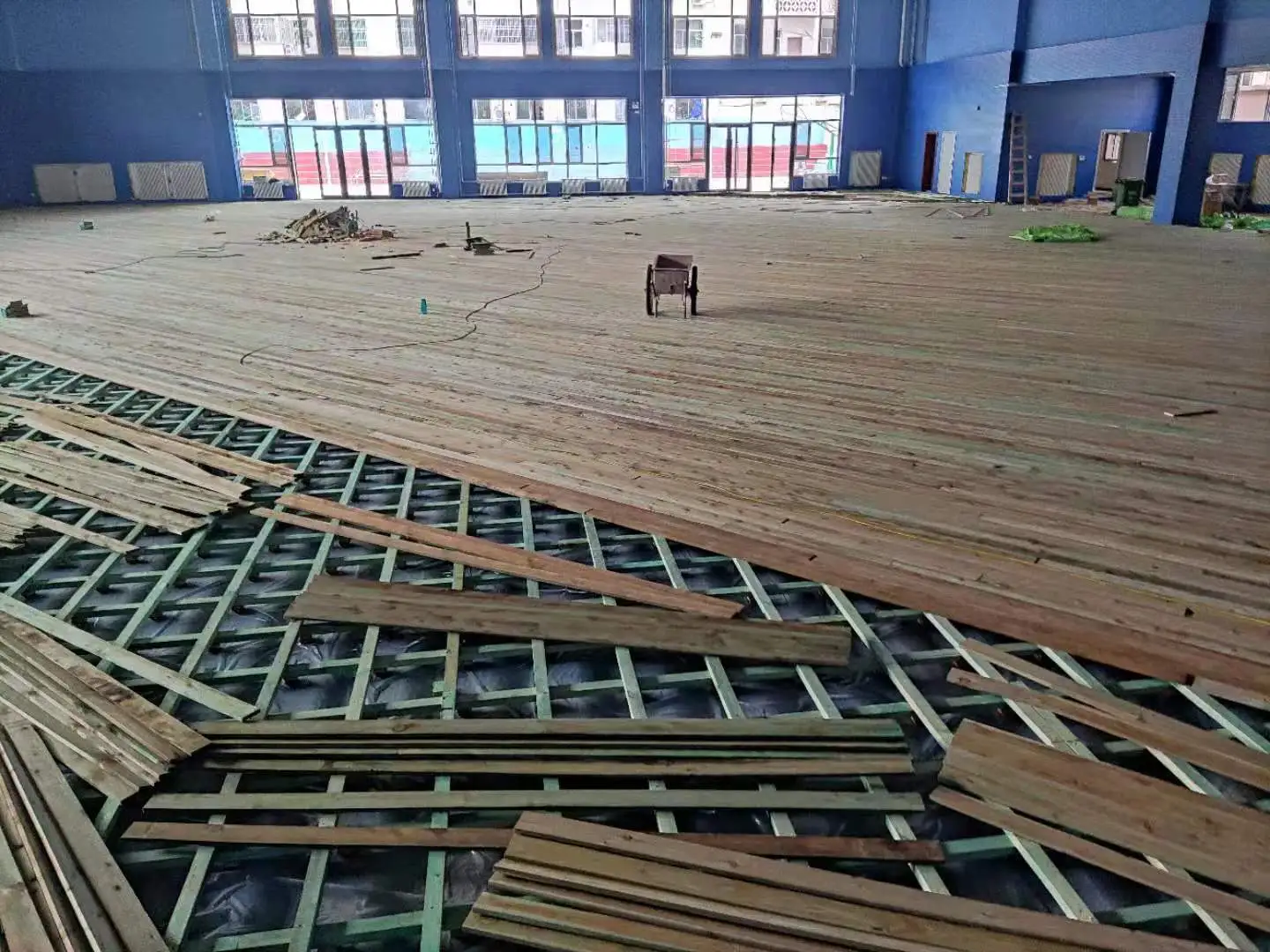Adjusting Floor Maintenance Frequency Based on Usage: Extending the Life of Sports Wood Flooring
Sports wood flooring is widely recognized for its durability and comfort, making it a popular choice for various athletic venues. However, different venues experience different levels of usage, which results in varying degrees of wear and tear on the flooring. For high-traffic facilities, regular maintenance becomes critical—not only to prolong the life of the floor but also to ensure the safety and aesthetics of the venue.

1. Maintenance Needs for High-Usage Venues
In venues with high usage, such as basketball courts, volleyball courts, and dance studios, the flooring undergoes considerable wear. Frequent foot traffic and intense sports activities can cause surface scratches, scuffs, and even impact the floor's overall flatness. For these venues, more frequent maintenance is necessary. We recommend a comprehensive check-up every 3 to 6 months, including cleaning and necessary surface repairs. These measures help maintain the floor's smoothness and stability, ensuring that it continues to provide an optimal experience for athletes.
2. Maintenance Cycle for Medium-Usage Venues
For venues with medium usage, such as certain gyms or multi-purpose sports halls, the floor sees a moderate level of wear but still requires periodic care. In these cases, we suggest a professional maintenance check every 6 to 9 months, which includes inspection, cleaning, and localized repairs. Regular upkeep helps ensure the floor remains stable and prevents long-term damage from minor wear and tear.
3. Maintenance Cycle for Low-Usage Venues
Low-usage venues, such as community sports halls or school gymnasiums with limited activity, experience less floor wear but still require periodic maintenance. Generally, an annual comprehensive maintenance check is sufficient. During this maintenance, the focus should be on cleaning, checking for small cracks or stains, and performing any necessary repairs to keep the floor in good condition.
4. Choosing the Right Maintenance Approach
The maintenance methods should vary depending on the frequency of use. High-traffic venues need to focus on maintaining the cleanliness and slip-resistance of the floor. Regular deep cleaning using specialized wood floor cleaners is essential, and harsh chemicals should be avoided. A surface protection treatment, such as a penetrating sealant, can enhance the floor's durability, but traditional waxing should be avoided for sports wood flooring. For medium and low-traffic venues, maintenance can focus more on cleaning and light repairs to keep the floor in top condition.
5. Other Factors Influencing Maintenance Frequency
Apart from usage frequency, environmental factors such as humidity levels and the type of flooring material also affect maintenance schedules. For instance, high humidity environments can cause wood floors to expand, while excessively dry conditions can cause cracking. In such cases, the maintenance frequency may need to be adjusted based on the specific environmental conditions.
Properly planning the maintenance cycle for your sports wood floor can significantly extend its lifespan, minimize damage risks from wear, and improve user safety and experience. Regardless of the usage frequency, regular maintenance is key to ensuring the floor stays in optimal condition. As a professional sports wood flooring manufacturer, we recommend that every facility tailor its maintenance schedule based on usage patterns and provide customized care to ensure every floor achieves its maximum potential.